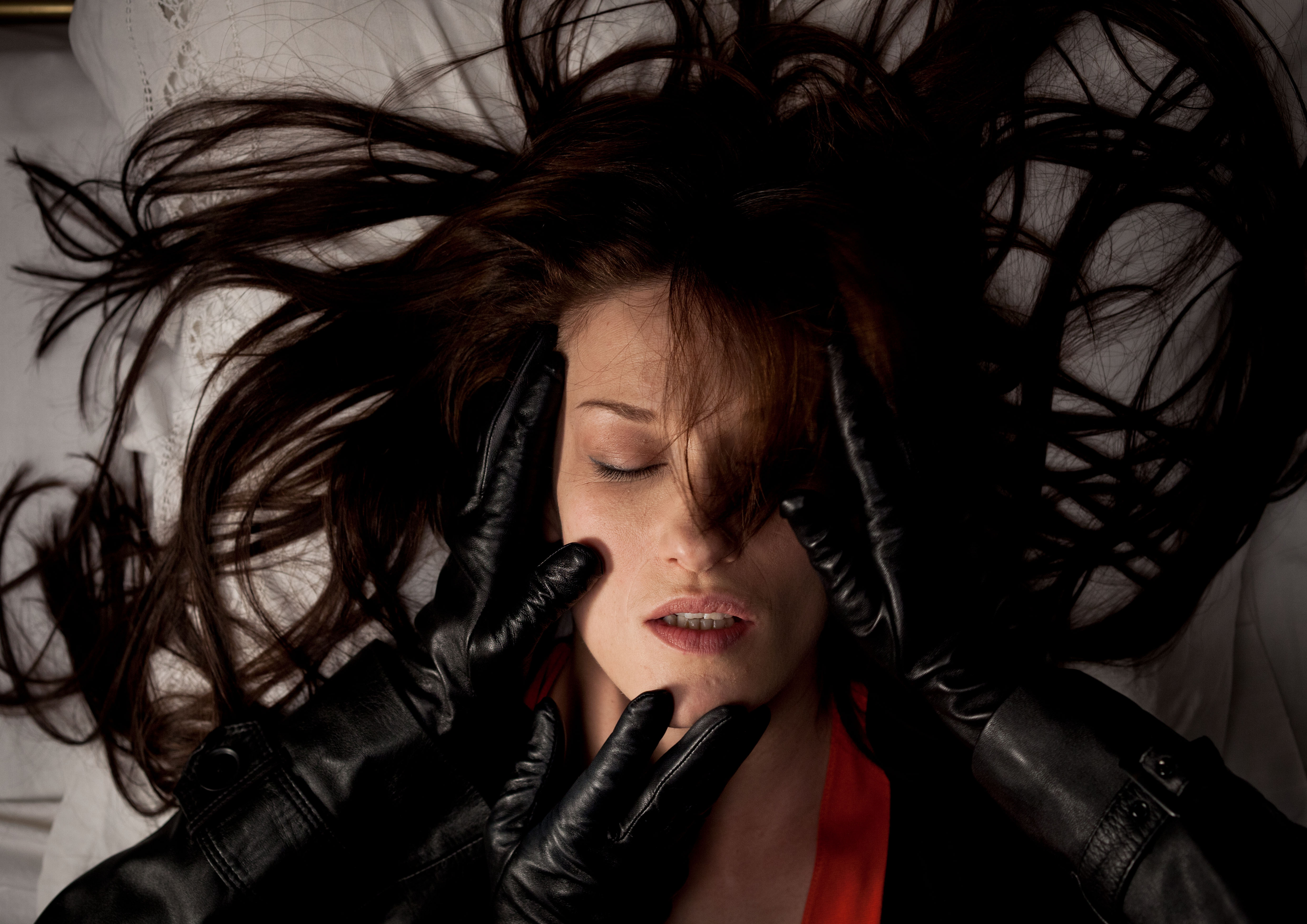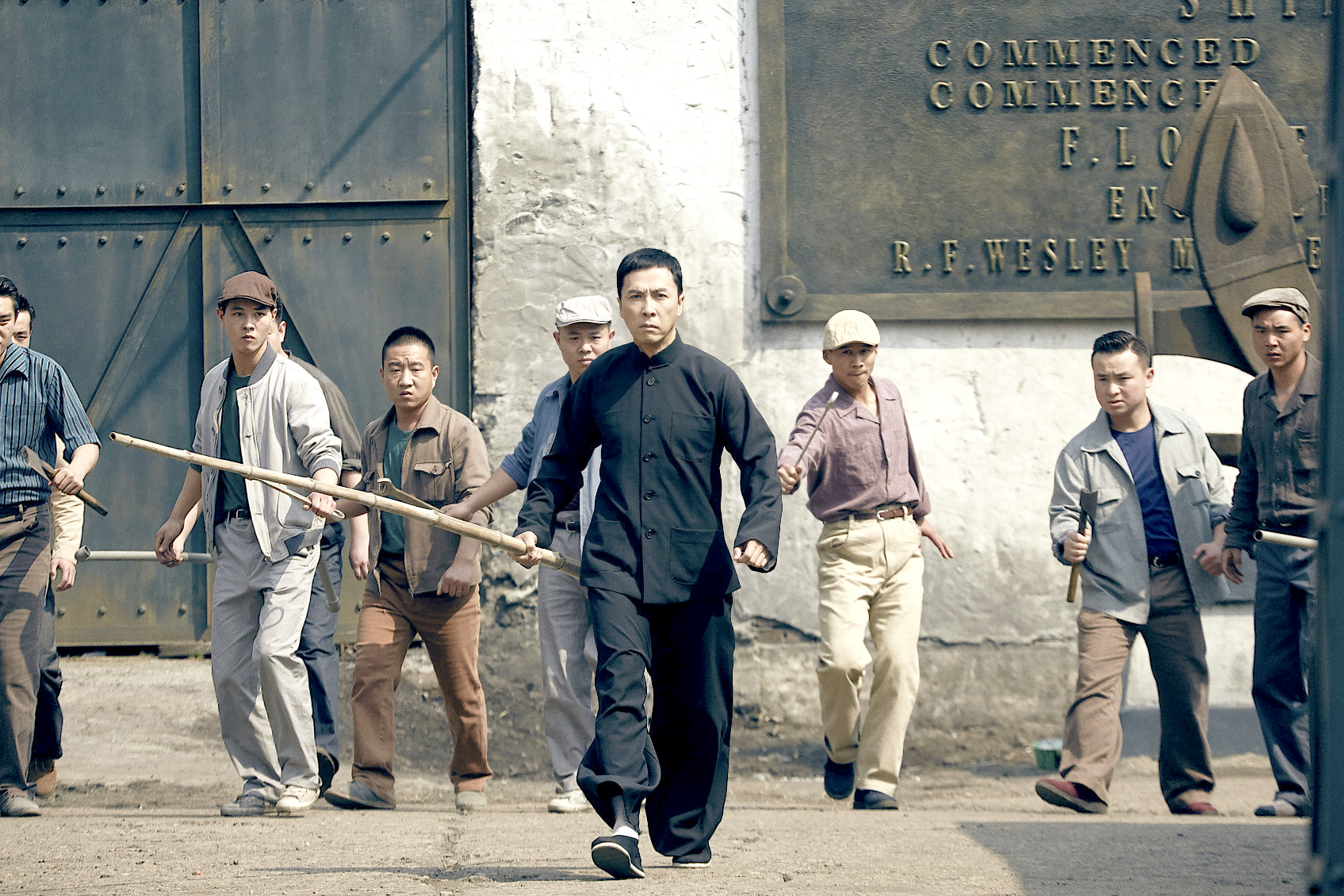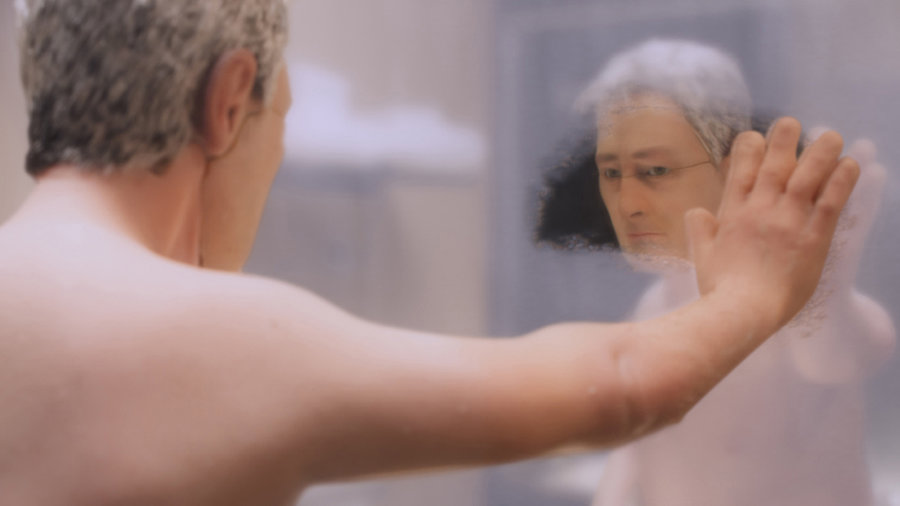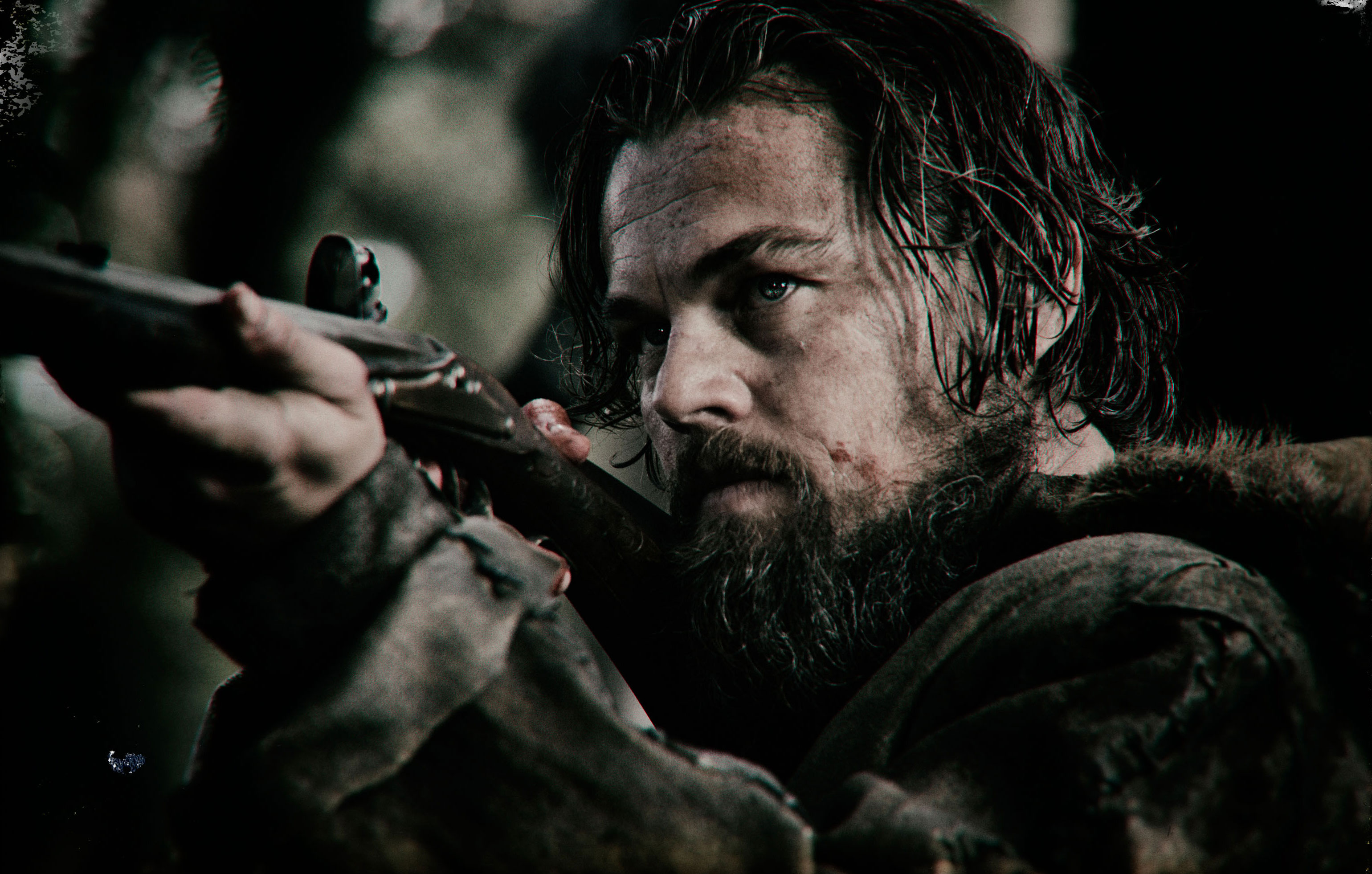The Belgian writer/director team Helene Cattet and Bruno Forzani are obsessed with the 1970s Italian horror subgenre known as giallo. Their 2010 Amer was a cool one-off, a clever compendium of lovingly imitated giallo motifs that also created a lush experience in and of itself. Except it wasn’t a one-off, because here’s another excursion into a world of saturated colors, sexed-up violence, and utterly incomprehensible storytelling. Cattet and Forzani may have gone to the well once too often, because Strange Color lacks the freshness of Amer. As a technical stunt, though, it’s super-trippy.
The title is meant to evoke long-winded gialli such as Dario Argento’s The Bird With the Crystal Plumage or Mario Bava’s Five Dolls for an August Moon. Insofar as the customary rules of plot are concerned, this one begins with a man named Dan Christensen (Klaus Tange) returning to his fabulous Art Nouveau apartment after traveling for business. His wife has vanished, and his search for her is complicated by very long, seemingly unrelated stories told by an eccentric downstairs neighbor and an unhelpful detective. It would be nice to say that these sub-stories are folded back into the missing-woman narrative before the end of the movie—I think they might be—but I’m not sure it makes much difference. The movie’s a compendium of arty set-pieces: a split-screen sequence here, a bloody nightmare there, and one long scene composed of black-and-white still frames conveying movement, like the classic Chris Marker short La Jetee.
Danish-born leading man Tange has the sunken-cheeked smolder of Klaus Kinski, which doesn’t hurt the movie’s magazine-layout appeal. The fact that his character keeps insisting “I’m in global telecommunications” does not pass the credibility test, as this guy would look more comfortable hanging around the Euro-hipster vampires of Only Lovers Left Alive or selling erotic photographs at a sidewalk market. There’s also a parade of beautiful women, frequently seen with a knife or other sharp object being unpleasantly dragged across their nude bodies. The movie would be easier to take if Cattet and Forzani displayed humor about these images, but they sure seem serious about it. The movie’s for their very narrow audience: those who know giallo and savor the act of cultural re-creation. For that demographic, it’s a success. Runs Fri., Sept. 5–Thurs., Sept. 11 at Grand Illusion. Not rated. 102 minutes.
film@seattleweekly.com







